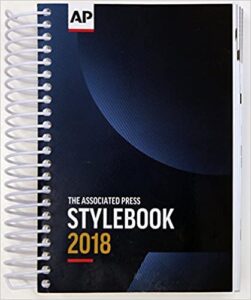 By Maya Bryant
By Maya Bryant
Walking into Lord of Life Lutheran in Ramsey on October 6, I wasn’t entirely sure what to expect. It was our second Communicators Gathering in person since the beginning of the pandemic, and our constituents were excited to come together again with some new faces in the mix.
The topic: style guides – their importance, their use, how to make them, etc. The communications staff cultivated a group of panelists – journalists, editors, and style guide lovers – to hold a Q&A about their experiences of interacting with these essential rubrics for editing and design.
If you don’t know, style guides are “instructions” that help communicators format how they share information with their audience. These “suggestions” or “rules” can range from things as broad as color schemes in emails to things as minute as whether or not to add a colon and two zeros after the three in 3:00 p.m.
“Style guides are ‘instructions’ that help communicators format how they share information with their audience.”
While the minutiae of style guides can be overwhelming for some, I find them to be relieving. To have a set of rules to follow to make sure that everything is included correctly and succinctly allows an author’s creativity to shine and simultaneously allows English written language to be understood by most. Keyword: most.
By creating your own style guide with your colleagues, you can build an identity for how you communicate. (This is a project I believe our synod staff should consider going forward with our written language). So, I was certainly anxious to hear what these panelists had to say.
I WAS PLEASANTLY surprised by the immediate and extensive conversation about the importance of inclusion. When asked about a time in their work when a style guide was important, Christina Colón, a well-versed journalist and editor, spoke about her excitement that in 2019, the accent in her last name was recognized in the AP (Associated Press) style guide. Previously, the accent was not allowed to be inserted in her name in journalistic writing because AP claimed it to be untransmissible between computer systems.
Her statement struck me in way I wasn’t ready for.
Despite the wonderful conversation around me, I kept going back to that little accent. A single accent was the difference between perceived inclusion and authentic inclusion. A single accent allowed an important part of Christina’s identity to exist in the places she thrived. And that was not afforded to her until 2019.
“A single accent was the difference between perceived inclusion and authentic inclusion.”
It made me think of the times my identity was erased for the sake of “ease.” The ‘I don’t see color’ people; the ‘what are you, really?’ people. Because my identity was too difficult for them to grasp, they’d drop certain pieces to fit their narrative.
The accent matters. The accent is part of who you are. Without it, people can’t see all the parts that matter to you.
Are there accents that have been taken from you because someone deemed it “too difficult? What are you going to do about that? And, perhaps a more challenging question: Are there accents that you have edited out in order to fit with the rules? What can you do about that?
